Guess What?! Kitesurfing Right of Way Rules!
We can’t say this enough: following the right of way rules during your kite surf sessions in Dubai is key to keeping things safe and fun for everyone on the water. Whether you’re a beginner or a pro, it’s easy to overlook these rules, leading to risky or just plain frustrating situations. As kitesurfing gains popularity, the spots are getting more crowded, making it even more important to know and follow these basic rules.
We’ve put together a list of the main right of way rules, along with some good practices to avoid collisions and accidents, both on the beach and in the water. Plus, we’ve added some comments to explain the logic behind each rule. The main goals here are:
- Safety first;
- Keeping everyone’s session enjoyable;
- Following common maritime rules.
Rule #1: The rider entering the water from the beach has the right of way over the incoming rider.
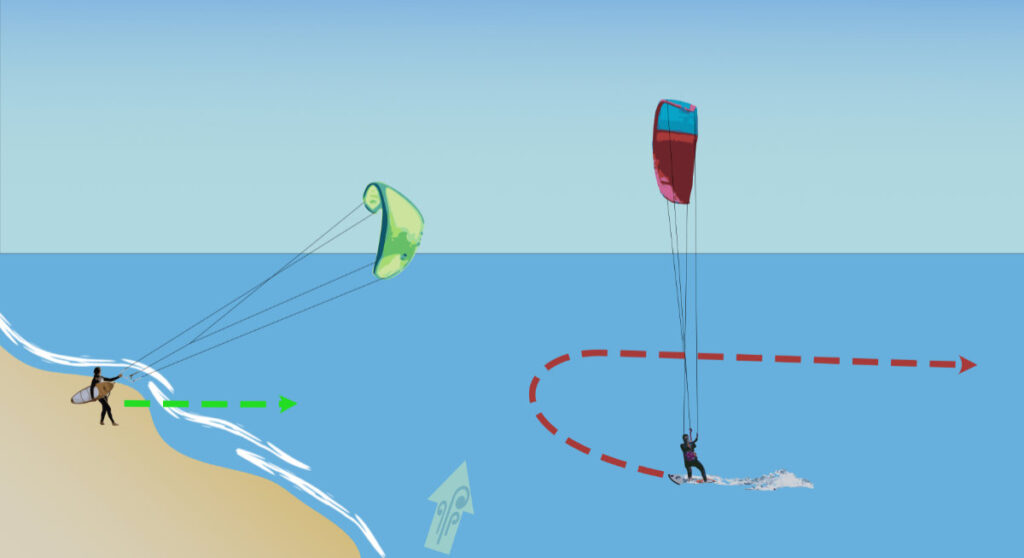
Why? It’s all about safety. The kiter on the beach is in a more vulnerable position, closer to solid obstacles and other beachgoers. They need to get into the water as quickly as possible. The kiter already on the water has more space and can safely wait.
Rule #2: The starboard rider (kite on the right-hand side) has priority and should maintain course, passing upwind with their kite higher.
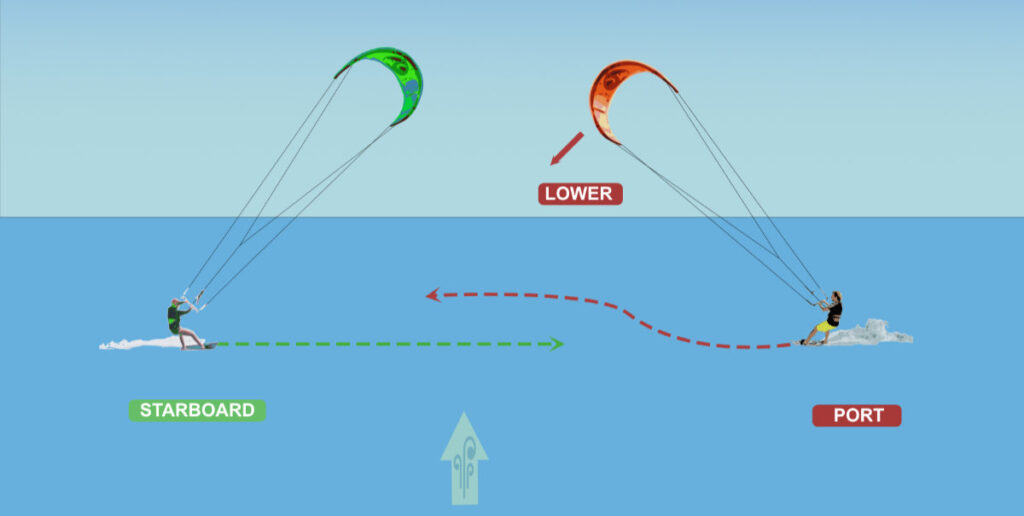
Why? This rule comes straight from maritime tradition—starboard (kite on the right) always has the right of way. To know if you’re the starboard rider, check if your kite is on your right and your right shoulder is leading your direction.
Rule #3: When two riders are going in the same direction, the faster rider coming from behind must give way to the slower rider in front.
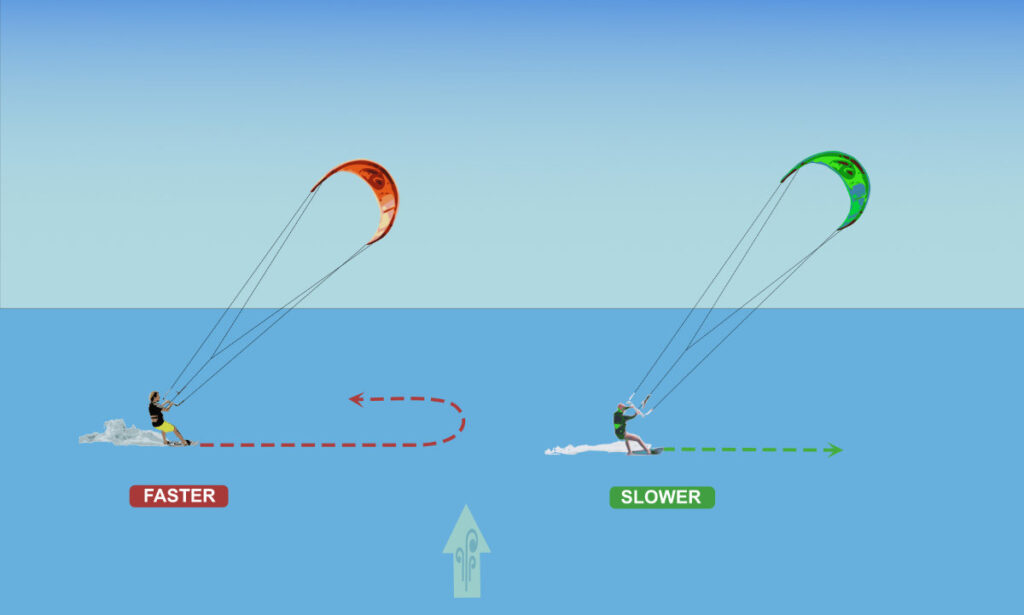
Why? Safety, again. The slower rider might not see the faster one coming and could suddenly change direction, risking a collision. Plus, they might be a beginner, so it’s best to avoid putting them in a tricky spot. During your kite surfing lessons in Dubai you will be learning more about these rules.
Rule #4: The rider surfing a wave has priority over the one who’s jumping or riding in the opposite direction.
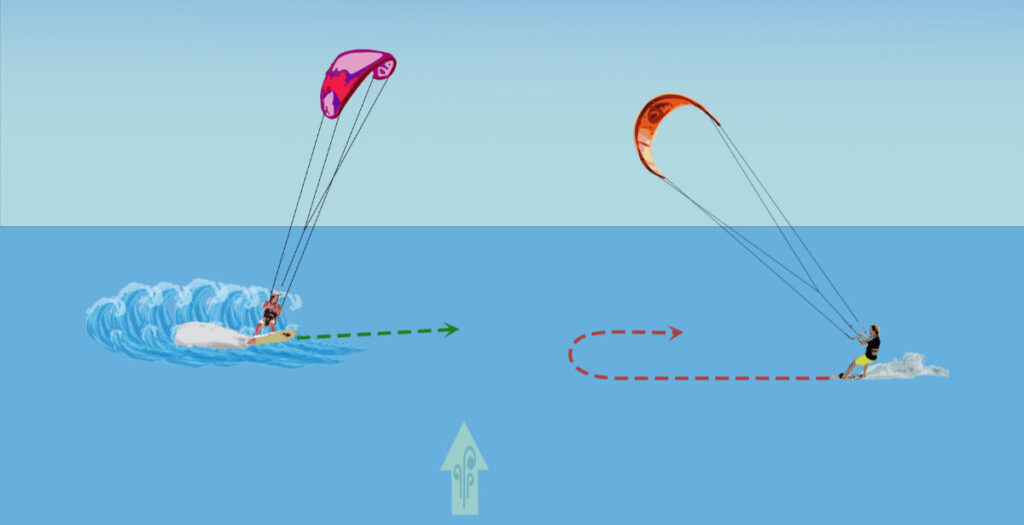
Why? It’s about being respectful and keeping everyone safe. The rider on the wave has less control, so it’s on the other rider to steer clear. And let’s face it, having to bail on a great wave because someone cut you off isn’t fun for anyone.
Rule #5: Give right of way to other ocean and beach users. Kiteboarders must travel downwind of them or change direction to avoid collisions.
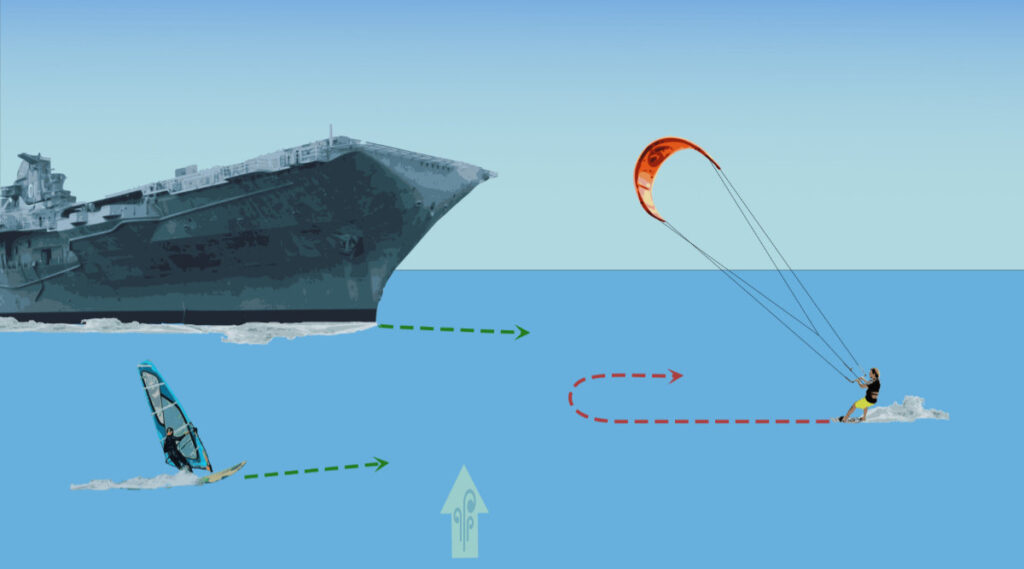
Why? Kitesurfers are quick and nimble, but other beachgoers or sea users may not be. It’s on us to steer clear and avoid any risky situations.
Rule #6: Before jumping, ensure you have a clear area of 50m downwind and 30m upwind.
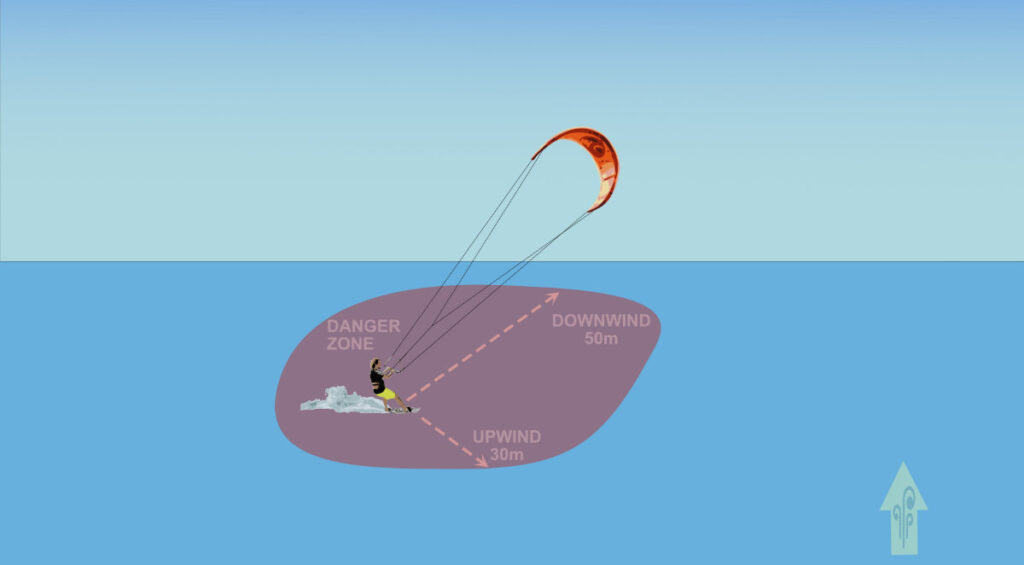
Why? This ensures you have enough space to land and avoids crashing into other kiters. It’s also smart to check behind you in case someone missed Rule #3! Usually any kite school offering kite surf lessons in Dubai sticks to teaching these rules to their students.
Rule #7: Give right of way to riders taking lessons or those who aren’t confident riding upwind.
Why? This follows a basic safety principle: less experienced riders need more space and time. We’ve all been beginners, so let’s pay it forward.
Rule #8: Body draggers have the right of way over riding kiters.
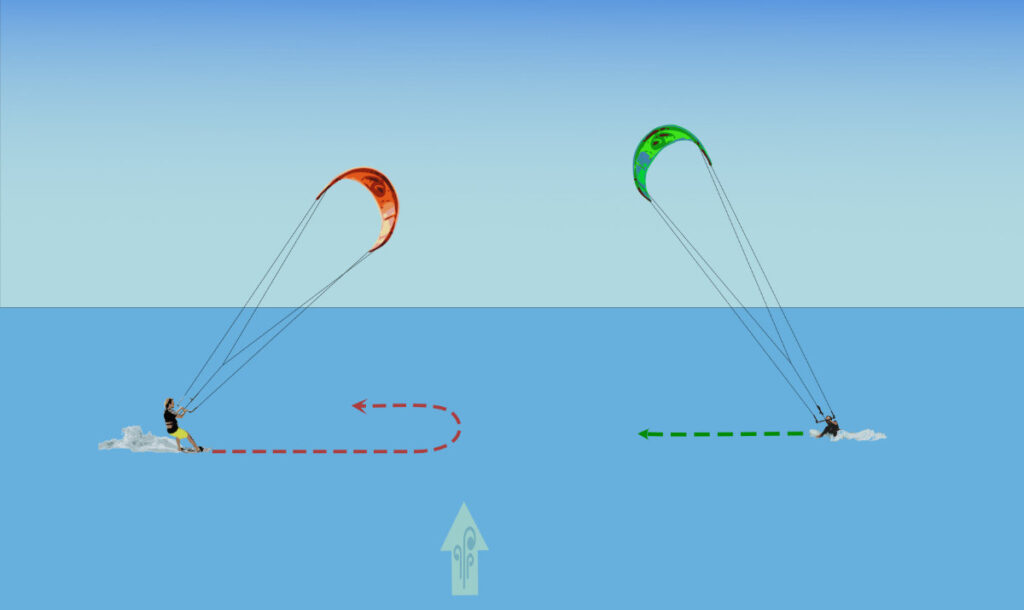
Why? A kiter who’s body dragging is slower, has limited vision, and might be in a tough spot. They need the space to get back on their board safely.
GOLDEN RULE: If you’re passing upwind, raise your kite. If you’re passing downwind, lower your kite.
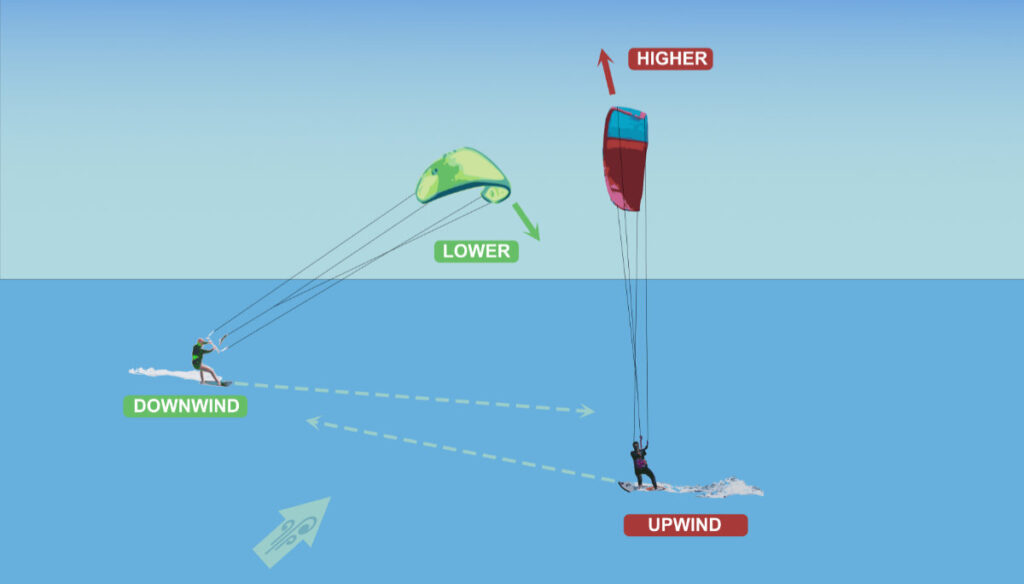
Why? This one’s pretty straightforward—try doing the opposite, and you’ll see why it’s a rule!
Common Sense Rule:
Always use your common sense when applying these rules. If someone else isn’t following them, that’s no reason to crash into them! Keep a safe distance whenever possible. In our kite surf school in Dubai those basic rules are widely discussed during the lessons.
We hope this quick guide helps make everyone’s kitesurfing experience better. If you have suggestions or think any of these rules need tweaking, let us know in the comments below—we’d love to hear your thoughts!

